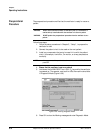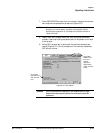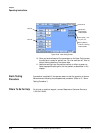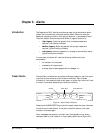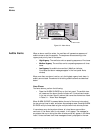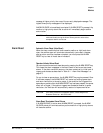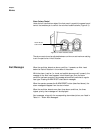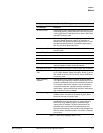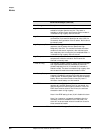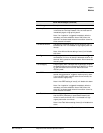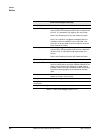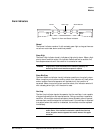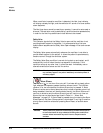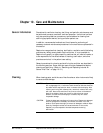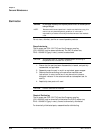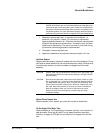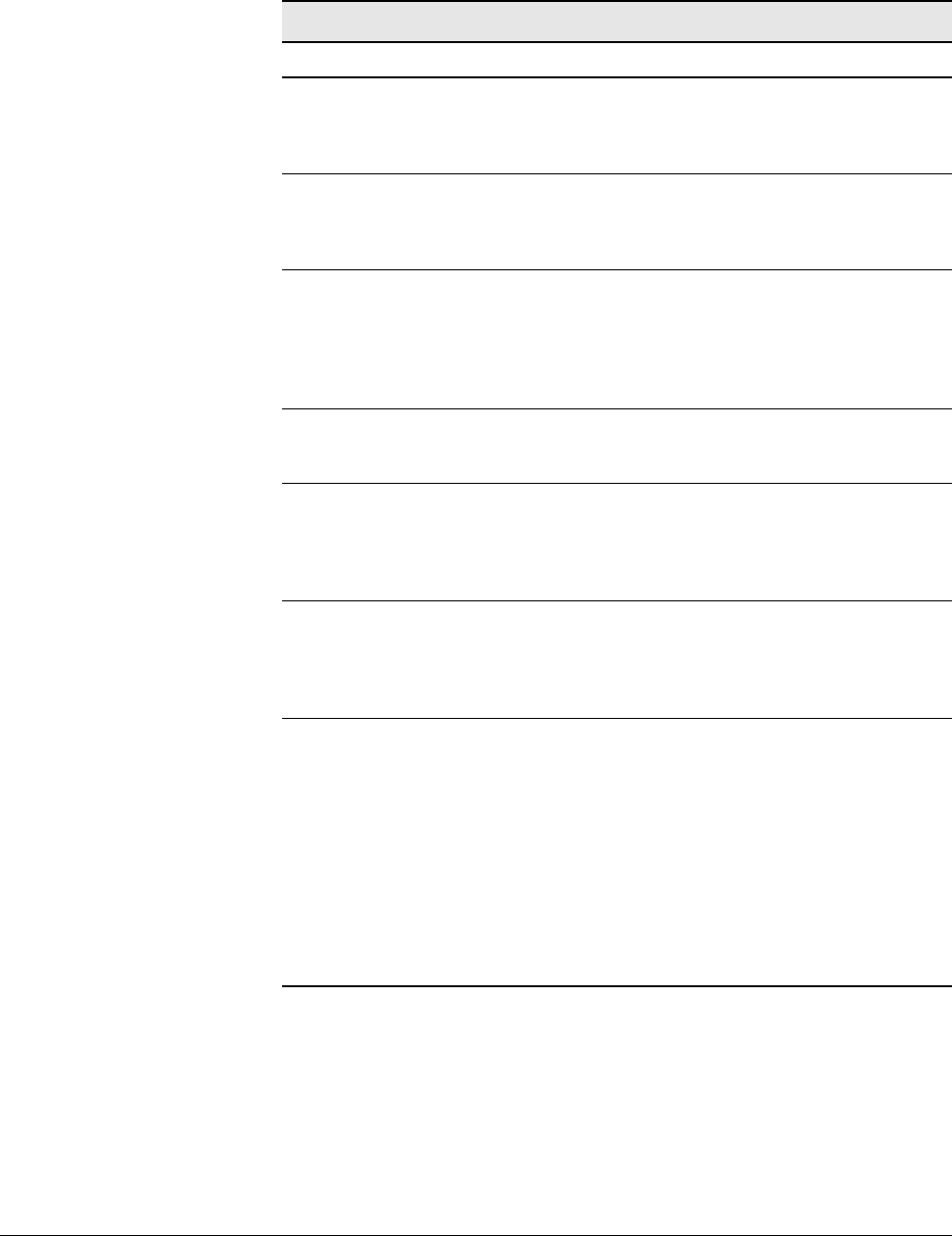
Chapter 9
9-6 Respironics V200 Ventilator Operator’s Manual REF 1057983 A
Alarms
High Minute Volume Indicates total minute ventilation (VE) measured in
exhalation is higher than the set limit. This alarm is
available in Volume Control and Pressure Control modes. It
is elevated to high urgency after one minute.
High O
2
A high urgency alarm indicates that the monitored O
2
concentration is at least 6% above the set value (%O
2
) for
30 seconds. Verify operation of the O
2
sensor. Alarm cannot
be manually reset.
High Respiratory Rate The ventilator triggers a medium urgency alarm if the total
respiratory rate is greater than the operator-set High
Respiratory Rate limit. The ventilator evaluates this alarm
condition at the start of inspiration, after calculating the
total respiratory rate including the just completed breath. It
is elevated to high urgency after one minute.
High Temperature Internal temperature monitor detects higher than allowed
temperatures inside the enclosure. Alarm cannot be
silenced or manually reset.
I-Time Too Long The ventilator triggers a medium urgency alarm to indicate
that a spontaneous breath has exceeded the maximum
allowed inspiratory time of 3.5 seconds (2.5 seconds in
Pediatric mode). The alarm is elevated to high urgency after
two consecutive breaths that meet the alarm criteria.
Low Backup Battery If the backup battery is low, a high priority alarm will be
triggered. Immediately connect an AC power source to avoid
a loss of power. Provide AC power and/or replace the backup
battery. Alarm cannot be silenced or manually reset. 5
minutes or less of battery run time remains.
Low EPAP If the Exhalation Positive Airway Pressure is less than the
operator set Low EPAP Pressure limit for one second, the
ventilator signals a medium urgency condition. If the Low
EPAP alarm remains active for one minute, the ventilator
elevates the alarm to high urgency.
Note: A Low EPAP setting of zero (0) will disable this alarm.
Note: If an inspiration is triggered immediately after the
mandatory minimum exhalation time of 200 msec, this
alarm will not be activated unless this condition occurs for
three consecutive breaths.
Alarm Alert Messages (Continued)
Alert Message Description
Table 9-1: Alarm Alert Messages (Sheet 2 of 4)



